A new study conducted by the Environment Agency in Great Britain predicts that water temperatures across the British Isles will be too warm in the summer to support native brown trout by 2080, a dire warning for anglers and what’s hailed as the commonwealth’s favorite fish. Using water temperature data collected from 641 sites over 60 months, the study’s authors crafted a model that predicts the average daytime water temperature in most British waters will climb above 19.5 degrees Celsius (about 68 degrees Fahrenheit) in just 55 years. That temperature threshold is when British brown trout stop feeding and stop growing, the study’s authors report.
Traditionally heartier than other trout species around the globe, brown trout could also be in trouble on the reproductive front. The same study predicts that winter water temperatures across the region will rise above the 12-degree Celsius (about 54 degrees Fahrenheit) temperature threshold needed for successful over-winter egg survival, also by 2080.
“Climate projections for England suggest there will be an increase of warmer, wetter winters and hotter, drier summers along with more frequent and intense extreme weather events,” the study reads. “Understanding the consequences of these changes on water quality and aquatic biota is important to inform the targeting of management actions and adaptation measures to help maintain the integrity of river ecosystems and the services they provide.”
The study is the first to go beyond just the borders of England and include all of Britain. The models used to predict these warmer water temperatures — and the ultimate demise of Britain’s storied native trout — used a “high emissions scenario,” referencing the continued global reliance on fossil fuels and the predicted pattern of carbon dioxide emissions around the world.
Brown trout from the British Isles are now found on every continent except Antarctica — the eggs of these prized fish, revered for their sporting assets and their table fare, were shipped far and wide in the late 19th century, and, like brown trout from continental Europe, have gained footholds in some of the most-storied trout-fishing destinations on earth. First introduced to the rivers and lakes of Tasmania in 1864, British browns and their continental cousins are now “naturalized” in New Zealand, Patagonia, the southern mountain streams of Africa and beyond.
Brown trout were the first non-native salmonids introduced to North America, too. In 1883, a shipment of browns was dumped from a railroad trestle into Michigan’s Baldwin River, marking the first known planting of the fish in the United States. The irony? The Baldwin wasn’t the intended destination for the fish — they were bound for Michigan’s Upper Peninsula, but inclement weather made the journey impossible, and, to save the trout, they were unceremoniously dropped into the Baldwin, where they persist today.
Noted American angler and the editor of TROUT Magazine, Kirk Deeter, caught his first brown trout on a fly in the Baldwin River, within walking distance of that now-storied railroad bridge.
“Brown trout have always been special to me,” Deeter said. “They’ve inspired me so much that I’ve literally traveled the world to fish for them.”
Indeed, Deeter has chased browns in the lakes of Tasmania, the rivers of Chile and Argentina, the south island of New Zealand and even on their home turf in England, Ireland and Iceland.
He recalls fishing for browns one night in Tasmania with fisheries biologists from the area.
“I remember seeing these huge wakes pushing up into the shallows and then watching the streamside bushes just rattle and quake,” Deeter said. “I asked the biologists what was going on, and they told me that the browns were bumping into the bushes to knock frogs into the water.
“If that doesn’t tell you how remarkable brown trout are, nothing will.”
There's no doubt that brown trout have earned their beloved status. Here in the U.S., they're the preferred trout in rivers ranging from the Delaware in the East to storied Western rivers like the Henry's Fork, the Green and the Missouri. They were among the first non-native trout planted within the boundaries of Yellowstone National Park, and they persist and thrive, often to the detriment of native trout, in rivers like the Rio Grande and the Gunnison.
For American anglers more conditioned to the challenges facing brook trout and cutthroat trout where these fish are indigenous, it's tough to come to grips with the fact that the tough-as-nails brown trout might be in peril in its home waters.
“We’ve always considered brown trout to be the most resilient of all trout species,” Deeter said. “Brown trout are the fish that have proven to be adaptable — they seem to be able to survive anywhere. They’re the uber-trout.
“It makes me sad to hear that they might not have a very long future in their native waters.”
The goal of the British study is to provide guidance on climate management in the country — sort of a cautionary tale if climate change continues on its present course.
“Quantifying the amount and timing of future warming in rivers will help understand where water quality and ecosystems may be affected and provide more robust evidence of where to target measures to adapt to these changes,” the study reads. “To understand how best to develop future projections of river [water temperature], Environment Agency reviewed potential modelling approaches and produced a robust framework for doing so.”
How the British government — and governments around the globe — respond to the new study and others like it — will likely determine the future of brown trout in their native waters, and, frankly, the future of native trout the world over.

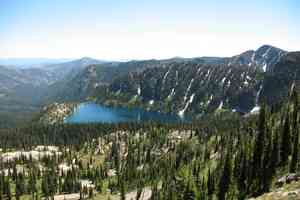



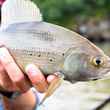
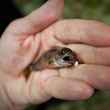

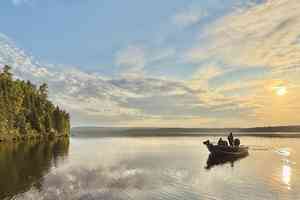
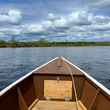
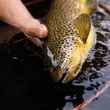



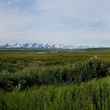

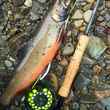

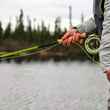


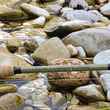

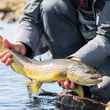
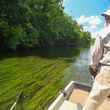

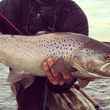

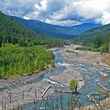

Comments
George replied on Permalink
The report may be true but it does not cover the whole of the UK. The report is only talking about England. The Environment Agency, which wrote the report, only works in England. It does not cover Scotland, Wales and Northern Ireland, where there are separate agencies under separate governments. Here in Scotland brown trout stocks are extremely healthy and summer temperatures are nowhere near as high as England.
Drew Gilchrist replied on Permalink
Good article. But I would be interested in understanding more about the computer modeling that came up with these predictions. And whether it leans into the man made climate change agenda that has been pushed on us for the past 30 years. Fortunately, all the alarmist predictions by supposed "scientists" have not come true during that time. So the future may look bright for brown trout.
K.A. Johnson replied on Permalink
Sad to hear about.
Some of my favorite memories are catching large brown trout on the Big Flatbrook in northern New Jersey. The power and speed of those head down dogging fish was remarkable and always a thrill!
I hope something can be done to help in the U.K.
God bless all fish and fishermen!
Allen Lipscomb replied on Permalink
As we are going into a sunspot minimum and the worlds temperature is going down , this isn't a problem. For anyone that is interested look up the Maunder minimum. Sunspot activity has gone down. We are about to go into a mini ice age !
Bob Heine replied on Permalink
What is not mentioned in the article is the profoundly negative effects of hatcherization of brown trout. Salmonids including brown trout have been on earth over 20 million years. They have seen massive changes in temperature, water and environment. And they have survived. Man’s bucket breeding and hatchery domestication is what is destroying brown trout.
Gary replied on Permalink
Sad first article I read in Gatch is BS. All hearsay and conjecture. Been trout fishing over 60 years, same BS was said about acid rain. Other science is showing possible ice age ahead, magnetic north moving etc. Let’s see the computer model used and data entered, fact before fiction. Hatch you should be embarrassed for printing this garbage. Stick to fishing!!!!
Pages